
THE VOICE OF INTERNATIONAL LITHUANIA
|
VilNews has its own Google archive! Type a word in the above search box to find any article.
You can also follow us on Facebook. We have two different pages. Click to open and join.
 Click on the buttons to open and read each of VilNews' 18 sub-sections Click on the buttons to open and read each of VilNews' 18 sub-sections  |
- 1.Front page
- 2.About VilNews
- 3.Lithuania today
- 4.Historical Lithuania
- 5.Photos from Lithuania
- 6.Travel Lithuania!
- 7.Lithuania in the world
- 8.The world in Lithuania
- 9.Litvak forum
- 10.Culture and events
- 11.Real estate - architecture
- 12.Business, economy - investments
- 13.Education, research and development
- 14.Sport and leisure
- 15.Health and wellbeing
- 16. Visit markets - Go shopping
- 17.Lithuanian food and beverages
- 18.Hotels and restaurants
Go shopping sidebar
The Gariunai Market is a place you will never forget once you’ve been there
- Posted by - 1109(6) Commenthttps%3A%2F%2Fvilnews.com%2F2011-01-the-gariunai-market-is-a-place-you-will-never-forget-once-you%25e2%2580%2599ve-been-thereThe+Gariunai+Market+is+a+place+you+will+never+forget+once+you%E2%80%99ve+been+there2011-01-12+18%3A53%3A480df53x21http%3A%2F%2Fvilnews.com%2F%3Fp%3D1109
Text: Jolita Sinicaite
If you want a taste of the largest open-air market on the Baltic Coast, then Gariunai Market is the place to go. Twenty minutes outside Vilnius, Gariūnai is a market place big as an airport, with tens of thousands of cars packed side by side, and the utility company Vilniaus Energy‘s cooling towers behind. It has ample room for 100,000 merchants and people . The Lithuanians call it “The largest market in Europe”, and considering its size, it may actually be true. People come here from all the Baltic States and from Poland, Russia, Belarus, Western Europe, Asia and all the way from Vietnam and the Arab world to sell and buy things. As you walk through the market you can hear all of the eastern European languages.. All kinds of goods like clothes, music, shoes and software are available here. For those on a low budget Gariunai Market is a must-see; however, quality doesn't come cheap.
You can find anything from cheap detergent, children's clothes, car spare parts, stolen car stereos with the characteristically snipped-off cables, knickknacks, to software and all-new ex-Red Army night-vision telescopes, everything!
This is the sketchiest market in all of Lithuania and all Baltic countries. Besides the regular array of cleaning products (they are about 10% cheaper than they would be in Maxima or IKI), this place boasts the most junk for your money. You can really find anything here. Take care of your belongings! Try to go there accompanied by a local person
Established on the outskirts of Vilnius in 1990, within a couple of years the Gariunai open-air market had become a major centre for private wholesale trade within the former Soviet Union. Providing an income a nd jobs to thousand of people...
Criticism is leveled at various aspects: the market is uncivilized and dominated by racketeers and thieves; traders just stand there, they don't do real work; incomes are not declared, thus trade is black; the market is considered non-Lithuanian, and especially dominated by Poles and Russians; it is outdoor and often dirty (one's shoes get dirty), and finally goods are of poor quality and traders often cheat.
Furthermore, a continuous impoverishment of the market has recently taken place; profits are diminishing, while at the same time new groups of the population are entering the market, often forced by increasing (though largely hidden) unemployment in Lithuania. Many teachers, technicians and even a few artists (many of them women) have lately begun trading. This development has further influenced the status of the market. But although all the points of criticism of the market hold elements of truth, the process of marginalization, symbolically as well as economically seems to be more complex and in addition highly political; there is indeed more to it than dirty shoes.
Picturing Gariunai entirely as a novelty, however, would be misleading, since many traders have experiences from past (illegal) forms of underground production and trading, and the association between trade and 'speculation' is still significant. Thus when asked about the history of the market, traders usually explained that the market began as “talkucke”, an 'illegal place for speculation'
Places like Gariunai might be difficult to come to terms with for Lithuanians and Westerners alike, because they are visible signs of a very different kind of 'transition' from what was expected and accepted. But they are significantly, precise because they contradict the ideology of 'the transition' in several ways. They challenge academic and political discourse on the transition by questioning the political project of a homogenous nation state, the creation of a Western-style market and the possibility of achieving a Western living standard. On the contrary, the use of the Russian language, the prevalence of multi-ethnicity and traders' trans-ethnic and Asian orientation give it a distinct flavour of a sort of globalized Sovietism, and indeed there seems to be very little 'Western' about it at all.
Today Gariunai: http://wikimapia.org/1458487/Gariunai-Cars-Marketplace
![]()
![]()
![]()
![]()
![]()
![]()
![]()
![]()
![]()
![]()
![]()
Modernization projects are now in process and Gariunai is starting to call “park” on our days. 15,000 work places are there. Gariunai has their own Website - http://www.gariunai.lt/ . They are the biggest car trades, too http://www.autogariunai.lt/. Nearby there is a even a motel for a traders and customers http://www.gariunai.lt/motelis/index.php?DL=en I have to mentioned also their radio center http://www.gerasfm.lt/ and even football team http://www.fk.gariunai.lt/ Gariunai is a Government Importance Project on 32,5 hectares of land. There are recently constructed modern buildings already there and they are trying to resettle all the traders from their nasty booths outside to inside the buildings with new charges. Many don‘t want that because of higher costs.... And they are fighting against it... But sooner or later capitalistic views will take over... Soon from a non regulated, dirty, chaotic place where a real free market was and it is now will become a Westernized shopping mall. The identity of the biggest free market under sky will disappear ....soon.
- Bookmark :
- Digg
- del.icio.us
- Stumbleupon
- Redit it
Juozas Statkevicius
- Posted by - 1116(5) Commenthttps%3A%2F%2Fvilnews.com%2F2011-01-juozas-statkeviciusJuozas+Statkevicius2011-01-12+17%3A57%3A480df53x21http%3A%2F%2Fvilnews.com%2F%3Fp%3D1116
![]()
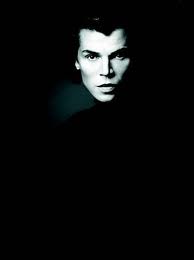 Juozas Statkevicius is Lithuania’s most prominent fashion designer, well-known far beyond the borders of the Baltic States. In fact, he is the first designer from the Baltics to present his haute couture collections in Paris (in 2001 and 2002) and the first Lithuanian who has made appearance on glossy pages of Elle and Vogue fashion magazines. Statkevicius designs are available in New York, London and Tokyo and such stars as Bjork, Kyra Sadgwick and Naomi Watts wear them. The designer, who recently celebrated his 40th birthday, considers that fashion exists for one single reason - the love towards a woman, and his creative style is a perfect manifestation of that. His designs are like exquisite dreams, acted out in garments, with every elaborate and evocative detail telling its own story. The Statkevicius fashion house in Vilnius is a destination in itself and provides a perfect background for his designs. Like a frame, captured from a 1940s Hollywood movie, it makes us forget the reality of the 21st century for a while... "The most dreadful is not to have a single dream, that's the end then," says the fashion designer who is renowned for his theatre costumes, too, featured on numerous scenes around the world.
Juozas Statkevicius is Lithuania’s most prominent fashion designer, well-known far beyond the borders of the Baltic States. In fact, he is the first designer from the Baltics to present his haute couture collections in Paris (in 2001 and 2002) and the first Lithuanian who has made appearance on glossy pages of Elle and Vogue fashion magazines. Statkevicius designs are available in New York, London and Tokyo and such stars as Bjork, Kyra Sadgwick and Naomi Watts wear them. The designer, who recently celebrated his 40th birthday, considers that fashion exists for one single reason - the love towards a woman, and his creative style is a perfect manifestation of that. His designs are like exquisite dreams, acted out in garments, with every elaborate and evocative detail telling its own story. The Statkevicius fashion house in Vilnius is a destination in itself and provides a perfect background for his designs. Like a frame, captured from a 1940s Hollywood movie, it makes us forget the reality of the 21st century for a while... "The most dreadful is not to have a single dream, that's the end then," says the fashion designer who is renowned for his theatre costumes, too, featured on numerous scenes around the world.

- Bookmark :
- Digg
- del.icio.us
- Stumbleupon
- Redit it
Lithuanian Apranga leads the Baltic fashion retail
- Posted by - 1127(1) Commenthttps%3A%2F%2Fvilnews.com%2F2011-01-lithuanian-apranga-leads-the-baltic-fashion-retailLithuanian+Apranga+leads+the+Baltic+fashion+retail2011-01-12+17%3A52%3A160df53x21http%3A%2F%2Fvilnews.com%2F%3Fp%3D1127
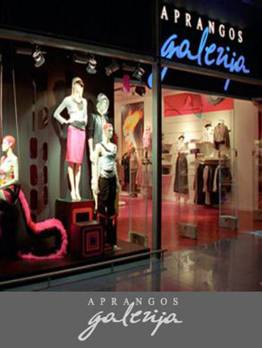 Apranga Group is a distinct leader of clothing retail in the Baltic States. Group increased retail clothing market share up to 35% in the local Lithuanian market. At the beginning of 2003, the company started its activity in Latvia. In 2004 company expanded to Estonia. Currently, the Group operates a chain of 114 stores in the Baltic States: 73 – in Lithuania, 31 – in Latvia, and 10 – in Estonia.
Apranga Group is a distinct leader of clothing retail in the Baltic States. Group increased retail clothing market share up to 35% in the local Lithuanian market. At the beginning of 2003, the company started its activity in Latvia. In 2004 company expanded to Estonia. Currently, the Group operates a chain of 114 stores in the Baltic States: 73 – in Lithuania, 31 – in Latvia, and 10 – in Estonia.
- Bookmark :
- Digg
- del.icio.us
- Stumbleupon
- Redit it
OPINIONS
Have your say. Send to:
editor@VilNews.com
Ph. D., Chicago
A wave of unity sweeps the international Lithuanian community on March 11th every year as Lithuanians celebrated the anniversary of the Lithuanian Parliament's declaration of independence from the Soviet Union in 1990. However, the sense of national unity engendered by the celebration could be short-lived.
Human beings have a strong tendency to overgeneralize and succumb to stereotypical us-them distinctions that can shatter even the strongest bonds. We need only search the internet to find examples of divisive thinking at work:
- "Those who fled Lithuania during World II were cowards -- and now they come back, flaunt their wealth, and tell us 'true Lithuanians' how to live."
- "Lithuanians who work abroad have abandoned their homeland and should be deprived of their Lithuanian citizenship."
In Lithuania Christmas Eve is a family event and the New Year's Eve a great party with friends!
Lithuanian say "Kaip sutiksi naujus metus, taip juos ir praleisi" (the way you'll meet the new year is the way you will spend it). So everyone is trying to spend New Year's Eve with friend and have as much fun as possible.
Lithuanian New Year's traditions are very similar to those in other countries, and actually were similar since many years ago. Also, the traditional Lithuanian New Years Eve party was very similar to other big celebrations throughout the year.
The New Year's Eve table is quite similar to the Christmas Eve table, but without straws under the tablecloth, and now including meat dishes. A tradition that definitely hasn't changes is that everybody is trying not to fell asleep before midnight. It was said that if you oversleep the midnight point you will be lazy all the upcoming year. People were also trying to get up early on the first day of the new year, because waking up late also meant a very lazy and unfortunate year.
During the New Year celebration people were dancing, singing, playing games and doing magic to guess the future. People didn't drink much of alcohol, especially was that the case for women.
Here are some advices from elders:
- During the New Year, be very nice and listen to relatives - what you are during New Year Eve, you will be throughout the year.
- During to the New Year Eve, try not to fall, because if this happens, next year you will be unhappy.
- If in the start of the New Year, the first news are good - then the year will be successful. If not - the year will be problematic.
* If New Year's night is cold and starry - look forward to a good summer!
* If the during New Year Eve trees are covered with frost - then it will be a good year. If it is wet weather on New Year's Eve, one can expect a year where many will die and dangerous epidemics occur.
* If the first day of the new year is snowy - the upcoming year will see many young people die. If the night is snowy - mostly old people will die.
* If the New Year time is cold - then Easter will be warm.
* If during New Year there are a lot of birds in your homestead - then all year around there will be many guests and the year will be fun.
Christmas greetings
from Vilnius
and epic battle for the
future
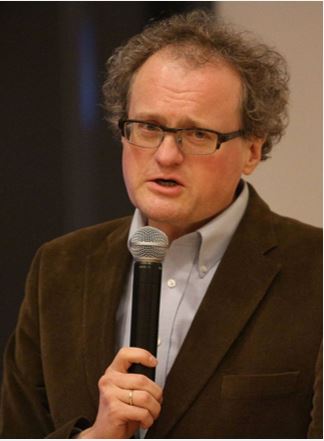
Philosopher, political theorist, historian of
ideas, social analyst, and political
commentator
Ukraine was and continues to be perceived by the EU political class as a sort of grey zone with its immense potential and possibilities for the future, yet deeply embedded and trapped in No Man's Land with all of its troubled past, post-Soviet traumas, ambiguities, insecurities, corruption, social divisions, and despair. Why worry for what has yet to emerge as a new actor of world history in terms of nation-building, European identity, and deeper commitments to transparency and free market economy?
Right? Wrong. No matter how troubled Ukraine's economic and political reality could be, the country has already passed the point of no return. Even if Vladimir Putin retains his leverage of power to blackmail Ukraine and the West in terms of Ukraine's zero chances to accede to NATO due to the problems of territorial integrity, occupation and annexation of Crimea, and mayhem or a frozen conflict in the Donbas region, Ukraine will never return to Russia's zone of influence. It could be deprived of the chances to join NATO or the EU in the coming years or decades, yet there are no forces on earth to make present Ukraine part of the Eurasia project fostered by Putin.
want to learn about the
new, scary propaganda
war between Russia,
The West and the
Baltic States!
believe their government
is corrupt
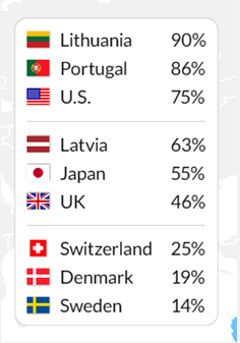
students say no to
bribes for doctors
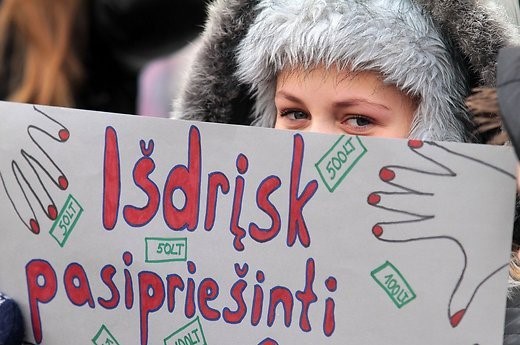

During Soviet times, government was administered for the people in control, not for the local population, court decisions were decreed, they were not the administration of justice, and academia was the domain of ideologues. 25 years of freedom and openness should have put those bad experiences behind Lithuania, but that is not so.
Today, it is a matter of expectation that court pronouncements will be governed by ideological dictates. Few, if any Lithuanians expect real justice to be effected. For foreign companies, doing business in Lithuania is almost impossible in a situation where business people do not expect rule of law, so, surely Government would be a refuge of competence?
Lithuanian Government has not emerged from Soviet styles. In an attempt to devolve power, Lithuania has created a myriad of fiefdoms of power, each speaking in the name of the Government, each its own centralized power base of ideology.

Chepstow, Wales
Doesn't that sound suspiciously like Lithuania? Ah, but I didn't mention the mountains of Snowdonia, which would give the game away.
I'm talking about Wales, that part of the UK which Lithuanians used to call "Valija", but later named "Velsas" (why?). Wales, the nation which has welcomed two Lithuanian heads of state to its shores - firstly Professor Vytautas Landsbergis, who has paid several visits and, more recently, President Dalia Grybauskaitė who attended the 2014 NATO summit which was held in Newport, South Wales.
ENGLISH VERSION OF THE
AUTOBIOGRAPHY OF VYTAUTAS LANDSBERGIS.
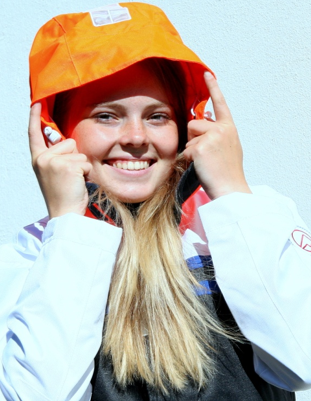
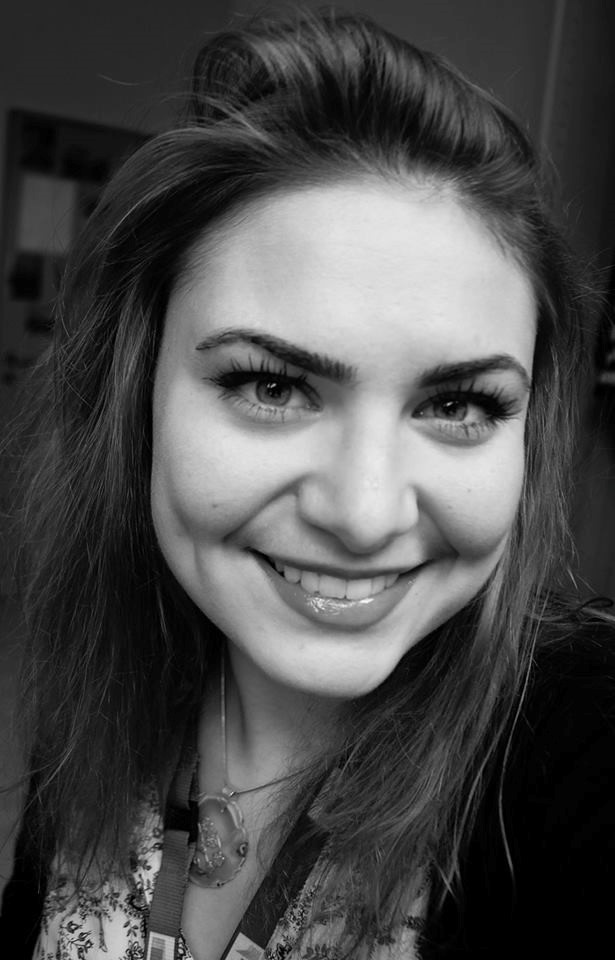
Although Lithuanian activities have thinned over the decades as that postwar generation died out, the Lithuanian Martyrs' parish hall is crowded with many, many hundreds of visitors who come to the Lithuanian cemetery for All Souls' Day. Similarly, the Franciscan parish has standing room only for Christmas Eve mass.
Although I am firmly embedded in the literary culture of Canada, my themes are usually Lithuanian, and I'll be in Kaunas and Vilnius in mid-November 2015 to give talks about the Lithuanian translations of my novels and short stories, which I write in English.
If you have the Lithuanian language, come by to one of the talks listed in the links below. And if you don't, you can read more about my work at
www.anatanassileika.com
http://www.vdu.lt/lt/rasytojas-antanas-sileika-pristatys-savo-kuryba/ https://leu.lt/lt/lf/lf_naujienos/kvieciame-i-rasytojo-59hc.html
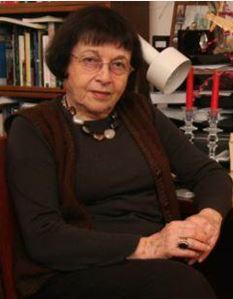
"My love and best wishes to all. As long as VilNews exists, there is hope for the future,"" she writes.
Irena Veisaite means very much for our publication, and we do hereby thank her for the support and wise commitment she always shows.
You can read our interview with her
Facing a new reality
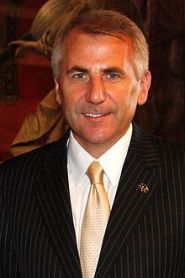
Dear readers of VilNews,
For a number of years, the EU and Russia had assumed the existence of a strategic partnership, based on the convergence of values, economic integration and increasingly open markets and a modernisation agenda for society.
Our agenda was positive and ambitious. We looked at Russia as a country ready to converge with "European values", a country likely to embrace both the basic principles of democratic government and a liberal concept of the world order. It was believed this would bring our relations to a new level, covering the whole spectrum of the EU's strategic relationship with Russia.
The likelihood of Putin
invading Lithuania
.jpg)
Founding Director at Summer Literary Seminars
Are all Lithuanian energy
problems now resolved?
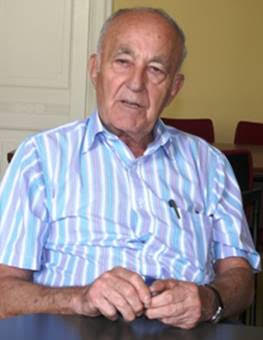
Lithuania as a country does not have significant energy resources. Energy consuming infrastructure after WWII was small and totally supported by energy imports from Russia.
First nuclear reactor begins power generation at Ignalina in 1983, the second reactor in 1987. Iganlina generates enough electricity to cover Lithuania's needs and about 50%.for export. As, prerequisite for membership in EU, Ignalina ceases all nuclear power generation in 2009
The Klaipėda Sea terminal begins Russia's oil export operations in 1959 and imports in 1994.
Mazeikiu Nafta (current ORLEAN Lietuva) begins operation of oil refinery in 1980.
Have Lithuanian ties across
the Baltic Sea become
stronger in recent years?

The two decades that have passed since regaining Lithuania's independence can be described as a "building boom". From the wreckage of a captive Soviet republic, a generation of Lithuanians have built a modern European state, and are now helping construct a Nordic-Baltic community replete with institutions intended to promote political coordination and foster a trans-Baltic regional identity. Indeed, a "Nordic-Baltic community" - I will explain later in my text the meaning of this catch-phrase.
Since the restoration of Lithuania's independence 25 years ago, we have continuously felt a strong support from Nordic countries. Nordics in particular were among the countries supporting Lithuania's and Baltic States' striving towards independence. Take example of Iceland, country which recognized Lithuania in February of 1991, well in advance of other countries. Yet another example - Swedish Ambassador was the first ambassador accredited to Lithuania in 1991. The other countries followed suit. When we restored our statehood, Nordic Countries became champions in promoting Baltic integration into Euro-Atlantic institutions. To large degree thanks Nordic Countries, massive transformations occurred in Lithuania since then, Lithuania became fully-fledged member of the EU and NATO, and we joined the Eurozone on 1 January 2015.

Have you heard about the
South African "Pencil Test"?

But that is exactly what happened to me when I came back from South Africa. I will tell you how.
VilNews e-magazine is published in Vilnius, Lithuania. Editor-in-Chief: Mr. Aage Myhre. Inquires to the editors: editor@VilNews.com.
Code of Ethics: See Section 2 – about VilNews. VilNews is not responsible for content on external links/web pages.
HOW TO ADVERTISE IN VILNEWS.
All content is copyrighted © 2011. UAB ‘VilNews’.






